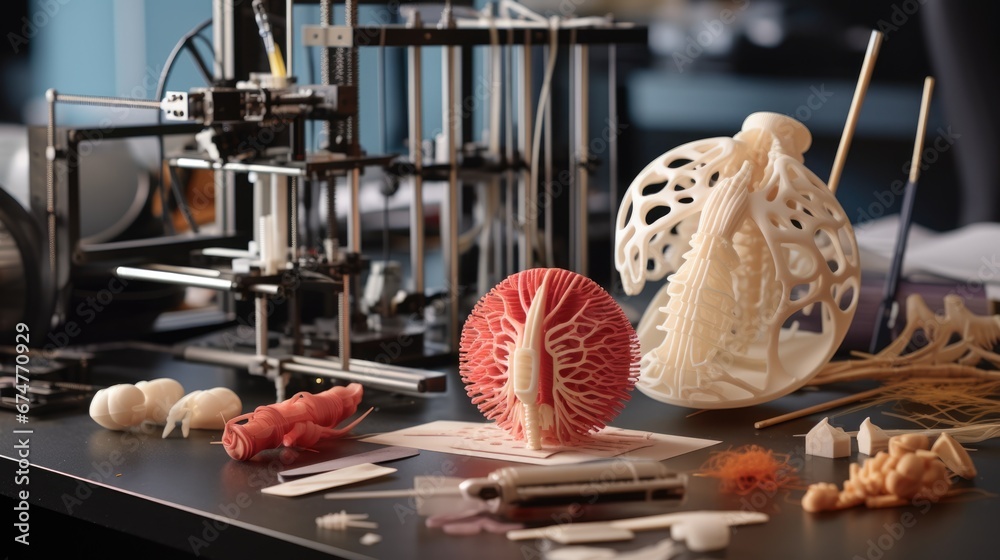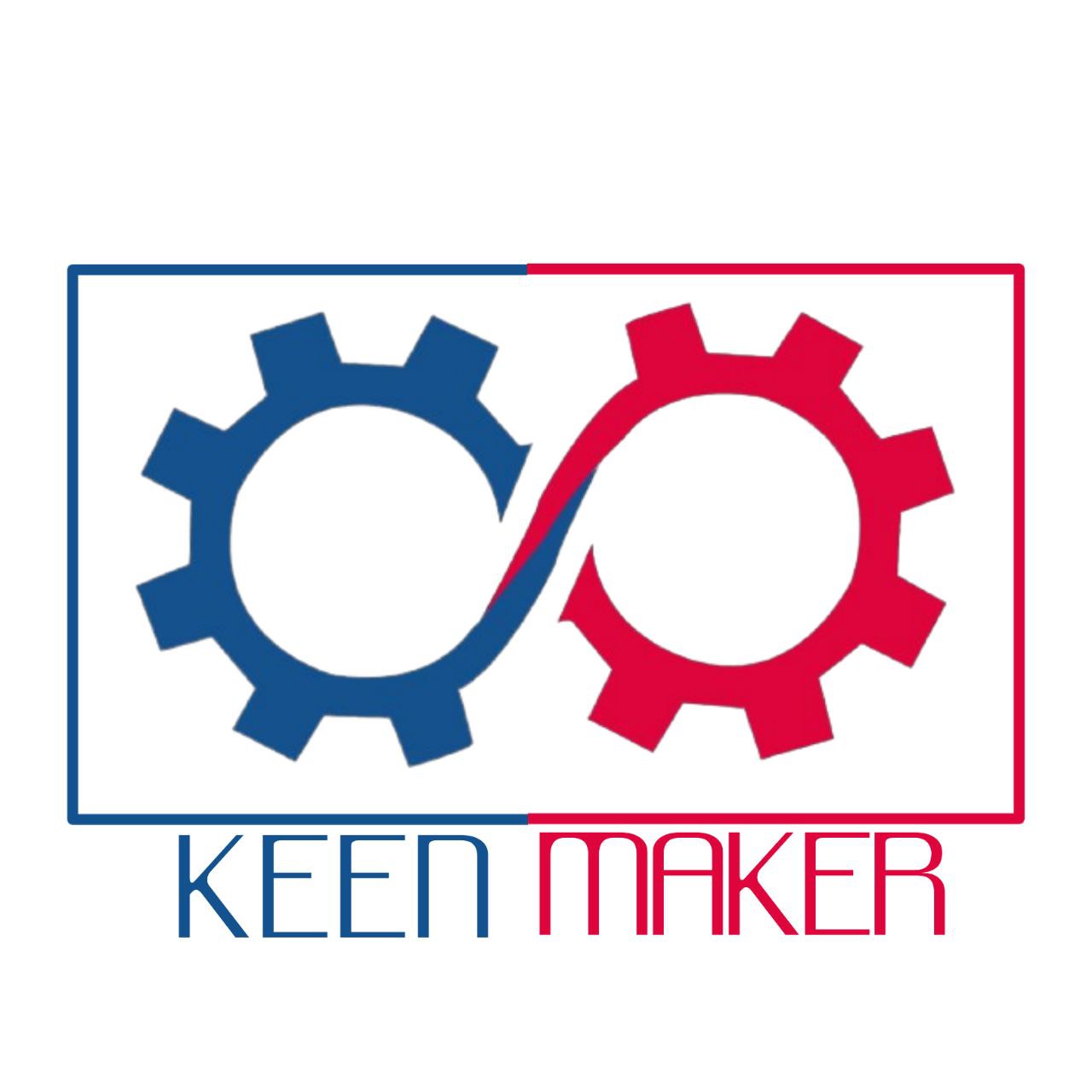
3D printing, also known as additive manufacturing, is revolutionizing the medical field with its ability to create highly customized and complex structures. From producing patient-specific implants to advancing bioprinting of tissues and organs, 3D printing is transforming healthcare. This article delves into the current applications of 3D printing in medicine, its benefits, and the exciting future prospects that this technology holds.
Table of Contents
Understanding 3D Printing in Medicine
3D printing in medicine involves using computer-aided design (CAD) to create three-dimensional objects layer by layer. This process allows for the creation of highly detailed and precise medical devices, implants, and even biological tissues.
How 3D Printing Works
- Design: A digital 3D model is created using CAD software or medical imaging data such as CT scans or MRIs.
- Preparation: The 3D printer is loaded with appropriate materials, which can range from plastics and metals to bio-inks.
- Printing: The printer builds the object layer by layer, following the digital model.
- Post-Processing: The printed object may require cleaning, sterilization, or additional finishing steps.
Current Applications of 3D Printing in Medicine
Customized Implants and Prosthetics
One of the most significant applications of 3D printing in medicine is the creation of customized implants and prosthetics tailored to individual patients. This customization enhances the fit, comfort, and functionality of these medical devices.
- Orthopedic Implants: Custom-fitted joint replacements and bone implants improve patient outcomes and recovery times.
- Dental Implants: 3D printing allows for precise dental restorations, including crowns, bridges, and dentures.
- Cranial and Maxillofacial Implants: Tailored implants for reconstructive surgery offer better integration and aesthetics.
Surgical Guides and Models
3D printing provides surgeons with detailed anatomical models and surgical guides, enhancing the precision and safety of complex procedures.
- Pre-Surgical Planning: Surgeons can use 3D printed models of patients’ anatomy to plan and practice surgeries, improving accuracy and reducing operative times.
- Custom Surgical Guides: These guides help surgeons navigate complex anatomy and ensure proper placement of implants.
Bioprinting Tissues and Organs
Bioprinting, a subset of 3D printing, involves using bio-inks made of living cells to create tissues and organs. While still in the experimental stage, bioprinting holds immense potential for regenerative medicine and transplantation.
- Skin Grafts: Bioprinted skin grafts can be used for treating burns and chronic wounds.
- Cartilage and Bone: Research is ongoing to develop bioprinted cartilage and bone for orthopedic applications.
- Organ Printing: Although full organ printing is not yet a reality, significant progress is being made in creating functional tissue structures for research and potential future transplantation.
Medical Devices and Instruments
3D printing enables the rapid prototyping and production of medical devices and instruments, allowing for quick iteration and customization.
- Customized Surgical Instruments: Tailored instruments improve surgical efficiency and outcomes.
- Hearing Aids: 3D printing is used to produce custom-fit hearing aids, enhancing comfort and effectiveness.
- Drug Delivery Devices: Personalized drug delivery systems can be designed and produced to meet specific patient needs.
Education and Training
3D printing is an invaluable tool for medical education and training, providing realistic models for simulation and practice.
- Anatomical Models: Detailed anatomical models help medical students and professionals enhance their understanding of human anatomy.
- Surgical Simulation: 3D printed models are used for practicing surgical techniques and procedures, improving skills and confidence.
Benefits of 3D Printing in Medicine
The integration of 3D printing into medicine offers numerous benefits that enhance patient care, improve medical outcomes, and drive innovation.
Customization and Personalization
3D printing allows for the creation of medical devices and implants tailored to individual patients, resulting in better fit, comfort, and functionality. This customization is particularly valuable in orthopedic, dental, and reconstructive surgeries.
Speed and Efficiency
3D printing accelerates the production process, enabling rapid prototyping and manufacturing of medical devices. This speed is crucial in situations where timely treatment is essential, such as during surgeries or in the development of personalized prosthetics.
Cost-Effectiveness
By reducing the need for traditional manufacturing processes and minimizing material waste, 3D printing can lower production costs. This cost-effectiveness makes it accessible for a wider range of medical applications and institutions.
Enhanced Surgical Precision
The use of 3D printed surgical guides and models improves the accuracy and safety of complex procedures. Surgeons can plan and rehearse surgeries using detailed anatomical models, reducing the risk of errors and improving patient outcomes.
Innovation and Research
3D printing fosters innovation in medical research and development. Researchers can quickly iterate and test new designs, materials, and techniques, driving advancements in medical technology and treatment options.
Challenges and Considerations
Despite its many advantages, 3D printing in medicine faces several challenges and considerations that need to be addressed.
Regulatory and Certification Issues
The production and use of 3D printed medical devices and implants must comply with stringent regulatory standards to ensure safety and efficacy. Obtaining certification for these products can be complex and time-consuming.
Material Limitations
While the range of materials for 3D printing is expanding, there are still limitations in terms of biocompatibility, strength, and durability. Ongoing research is needed to develop new materials that meet medical requirements.
Technical Challenges
3D printing requires specialized equipment, software, and expertise. Ensuring consistent quality and precision in printed medical products can be challenging, particularly for complex structures.
Ethical Considerations
The use of bioprinting and other advanced 3D printing techniques raises ethical questions regarding the creation and use of biological tissues and organs. Clear ethical guidelines and policies are needed to address these issues.
Future Prospects of 3D Printing in Medicine
The future of 3D printing in medicine is bright, with ongoing advancements set to further expand its capabilities and applications.
Advances in Bioprinting
Bioprinting holds the promise of creating functional tissues and organs for transplantation, potentially addressing the shortage of donor organs. Future developments in this field could revolutionize regenerative medicine and patient care.
Personalized Medicine
3D printing will continue to drive personalized medicine, enabling the production of customized drugs, implants, and medical devices tailored to individual patients. This personalized approach will enhance treatment efficacy and patient outcomes.
Integration with Other Technologies
The integration of 3D printing with other emerging technologies, such as artificial intelligence (AI) and robotics, will enhance its capabilities and applications. AI can optimize design and printing processes, while robotics can automate production and post-processing tasks.
Sustainable Healthcare Solutions
3D printing can contribute to more sustainable healthcare practices by reducing material waste and enabling localized production. Future advancements in eco-friendly materials and processes will further enhance the sustainability of 3D printing in medicine.
3D printing is transforming medicine, offering innovative solutions for patient care, medical research, and healthcare delivery. From customized implants and surgical guides to bioprinting and medical education, the applications of 3D printing are vast and varied. As technology continues to advance, the future prospects for 3D printing in medicine are incredibly promising, paving the way for a new era of personalized and regenerative healthcare.
